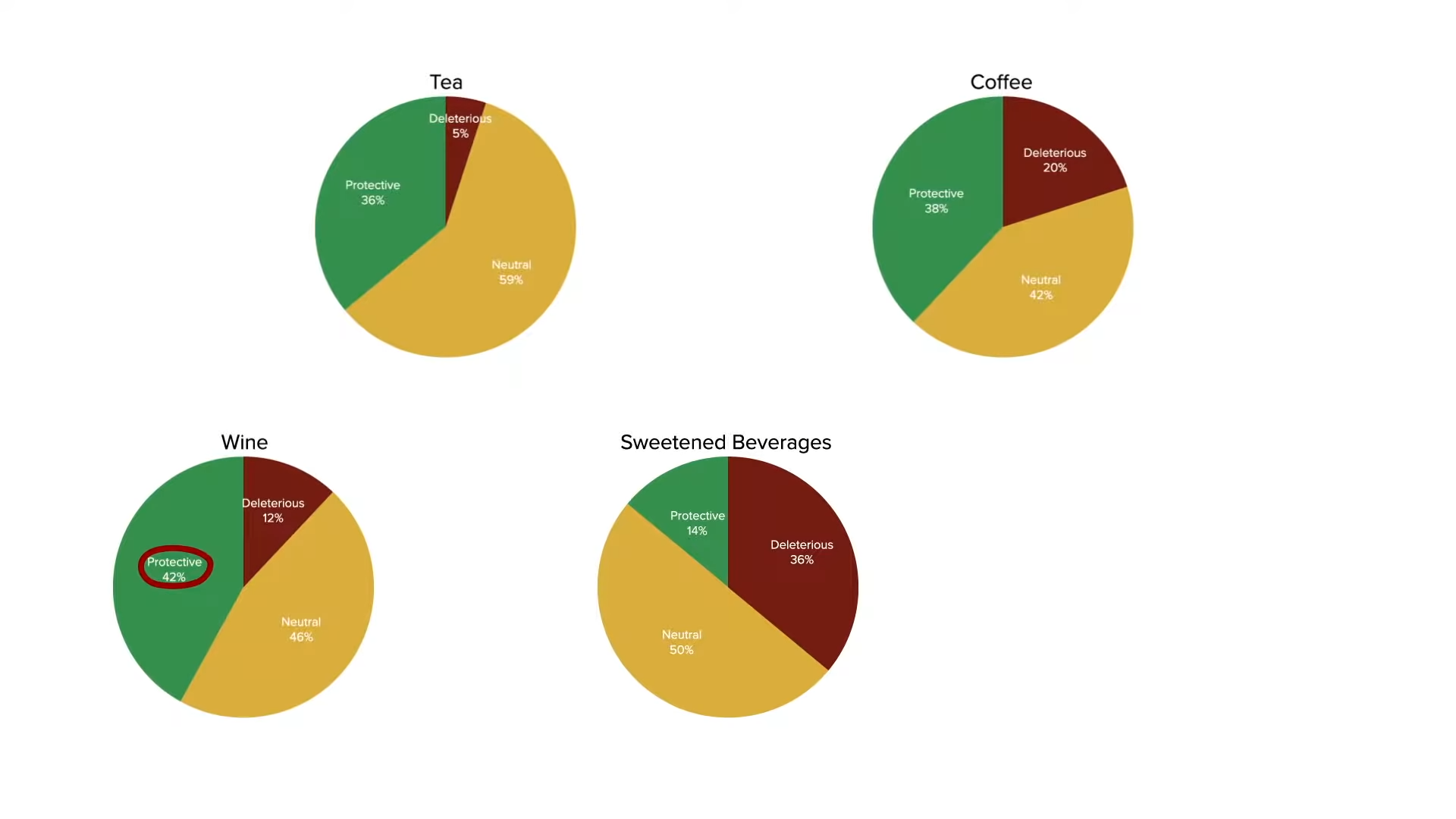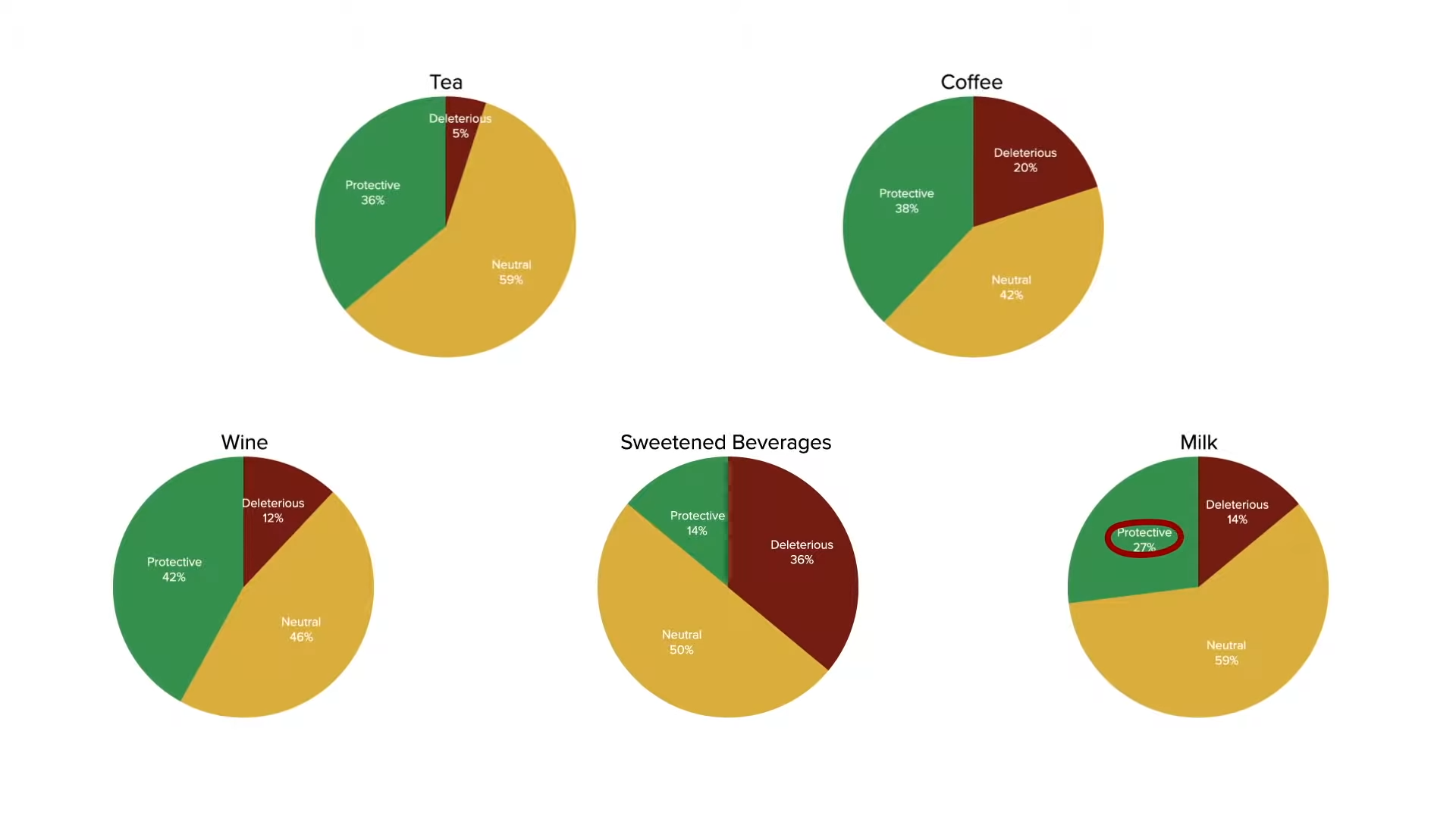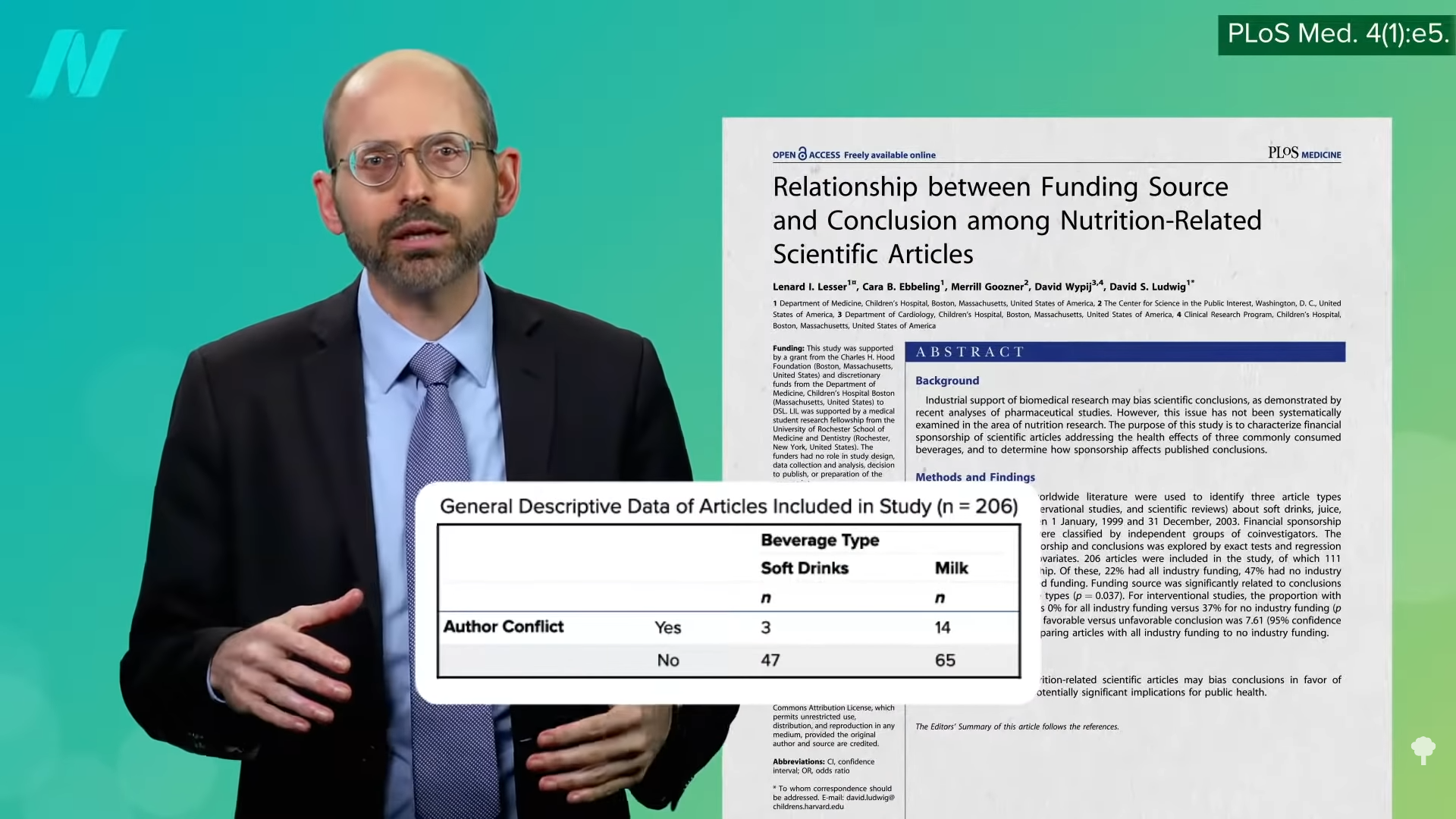
Here is a review of reviews on the health effects of tea, coffee, milk, wine, and soda.
If you’ve watched my videos or read my books, you’ve heard me say, time and again, the best available balance of evidence. What does that mean? When making decisions as life-or-death important as what to feed ourselves and our families, it matters less what a single study says, but rather what the totality of peer-reviewed science has to say.
Individual studies can lead to headlines like “Study Finds No Link Between Secondhand Smoke and Cancer,” but to know if there is a link between secondhand smoke and lung cancer, it would be better to look at a review or meta-analysis that compiles multiple studies. The problem is that some reviews say one thing—for instance, “breathing other people’s tobacco smoke is a cause of lung cancer”—and other reviews say another—such as, the effects of secondhand smoke are insignificant and further such talk may “foster irrational fears.” And, while we’re at it, you can indulge in “active smoking of some 4-5 cigarettes per day” without really worrying about it, so light up!
Why do review articles on the health effects of secondhand smoke reach such different conclusions? As you can imagine, about 90 percent of reviews written by researchers affiliated with the tobacco industry said it was not harmful, whereas you get the opposite number with independent reviews, as you can see below and at 1:18 in my video Friday Favorites: What Are the Best Beverages?. Reviews written by the tobacco industry–affiliated researchers had 88 times the odds of concluding that secondhand smoke was harmless. It was all part of “a deliberate strategy to use scientific consultants to discredit the science…” In other words, “the strategic and long run antidote to the passive smoking issue…is developing and widely publicizing clear-cut, credible, medical evidence that passive smoking [secondhand smoke] is not harmful to the non-smoker’s health.”
Can’t we just stick to the independent reviews? The problem is that industry-funded researchers have all sorts of sneaky ways to get out of declaring conflicts of interest, so it can be hard to follow the money. For instance, it was found that “77% failed to disclose the sources of funding” for their research. But, even without knowing who funded what, the majority of reviews still concluded that secondhand smoke was harmful. So, just as a single study may not be as helpful as looking at a compilation of studies on a topic, a single review may not be as useful as a compilation of reviews. In that case, looking at a review of reviews can give us a better sense of where the best available balance of evidence may lie. When it comes to secondhand smoke, it’s probably best not to inhale, as you can see in the graph below and at 2:30 in my video.

Wouldn’t it be cool if there were reviews of reviews for different foods and drinks? Voila! Enter “Associations Between Food and Beverage Groups and Major Diet-Related Chronic Diseases: An Exhaustive Review of Pooled/Meta-Analyses and Systematic Reviews.” Let’s start with the drinks. As you can see below and at 2:51 in my video, the findings were classified into three categories: protective, neutral, or deleterious.
First up: tea versus coffee. As you can see in the graph below and at 2:58, most reviews found both beverages to be protective for whichever condition they were studying, but you can see how this supports my recommendation for tea over coffee. Every cup of coffee is a lost opportunity to drink a cup of green tea, which is even healthier.

It’s no surprise that soda sinks to the bottom, as you can see below and at 3:20 in my video, but 14 percent of reviews mentioned the protective effects of drinking soda. What?! Well, most were references to papers like “High Intake of Added Sugar Among Norwegian Children and Adolescents,” a cross-sectional study that found that eighth-grade girls who drank more soda were thinner than girls who drank less. Okay, but that was just a snapshot in time. What do you think is more likely? That the heavier girls were heavier because they drank less soda, or that they drank less sugary soda because they were heavier? Soda abstention may therefore be a consequence of obesity, rather than a cause, yet it gets marked down as having a protective association.

Study design flaws may also account for wine numbers, as seen below and at 4:07 in my video. This review of reviews was published in 2014, before the revolution in our understanding of “alcohol’s evaporating health benefits,” suggesting that the “presumed health benefits from ‘moderate’ alcohol use [may have] finally collapsed”—thanks in part to a systematic error of misclassifying former drinkers as if they were lifelong abstainers, as I revealed in a deep dive in a video series on the subject.

Sometimes there are unexplainable associations. For example, one of the soft drink studies found that increased soda consumption was associated with a lower risk of certain types of esophageal cancers. Don’t tell me. Was the study funded by Coca-Cola? Indeed. Does that help explain the positive milk studies, as you can see in the graph below and at 5:02 in my video? Were they all just funded by the National Dairy Council?

As shown below and at 5:06, even more conflicts of interest have been found among milk studies than soda studies, with industry-funded studies of all such beverages “approximately four to eight times more likely to be favorable to the financial interests of the [study] sponsors than articles without industry-related funding.”

Funding bias aside, though, there could be legitimate reasons for the protective effects associated with milk consumption. After all, those who drink more milk may drink less soda, which is even worse, so they may come out ahead. It may be more than just relative benefits, though. The soda-cancer link seems a little tenuous and not just because of the study’s financial connection to The Coca-Cola Company. It’s hard to imagine a biologically plausible mechanism, whereas even something as universally condemned as tobacco isn’t universally bad. As I’ve explored before, more than 50 studies have consistently found a protective association between nicotine and Parkinson’s disease. Even secondhand smoke may be protective. Of course, you’d still want to avoid it. Passive secondhand smoke may decrease the risk of Parkinson’s, but it increases the risk of stroke, an even deadlier brain disease, not to mention lung cancer and heart disease, which has killed off millions of Americans since the first Surgeon General’s report was released, as you can see below and at 6:20 in my video.

Thankfully, by eating certain vegetables, we may be able to get some of the benefits without the risks, and the same may be true of dairy. As I’ve described before, the consumption of milk is associated with an increased risk of prostate cancer, leading to recommendations suggesting that men may want to cut down or minimize their intake, but milk consumption is also associated with decreased colorectal cancer risk. This appears to be a calcium effect. Thankfully, we may be able to get the best of both worlds by eating high-calcium plant foods, such as greens and beans.
What does our review-of-reviews study conclude about such plant-based foods, in comparison to animal-based foods? We’ll find out next.
Stay tuned for the exhaustive review of meta-analyses and systematic reviews on major diet-related chronic diseases found for food groups in What Are the Best Foods?.
The alcohol video I mentioned is Is It Better to Drink a Little Alcohol Than None at All?, and the Parkinson’s video is Pepper’s and Parkinson’s: The Benefits of Smoking Without the Risks. I also mentioned my Dairy and Cancer video.
What about diet soda? See related posts below.
What’s so bad about alcohol? Check out Can Alcohol Cause Cancer? and Do Any Benefits of Alcohol Outweigh the Risks? for more.
I’ve also got tons of milk. Check here.
My recommendations for the best beverages are water, green tea, and hibiscus herbal tea. Learn more in the related posts below.
